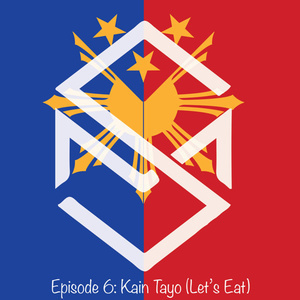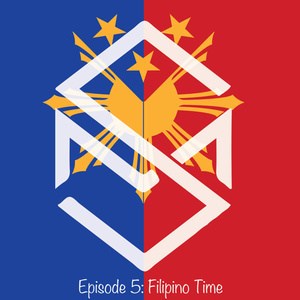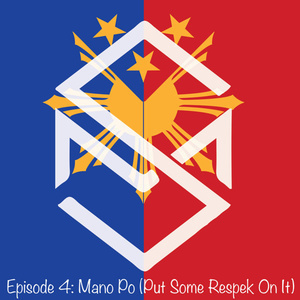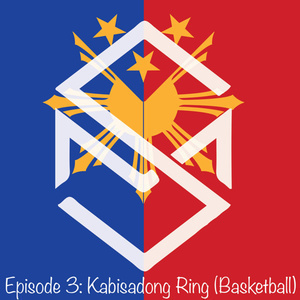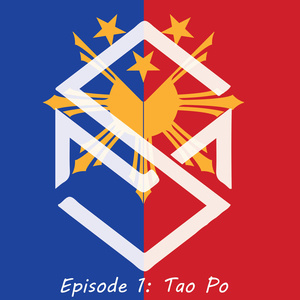I’ve noticed many podcasts have taglines, and I don’t really have one yet. I was thinking, how about this: “The Sherwin M Podcast: A podcast about being Filipino American, a father, a developer, a retired sneaker head, and beer.” It covers my social media bio, but maybe focuses too much on sneakers and beer which might not come up often. What do you think? Let me know!
Life Updates: Accidents, Standing Desks & Allergies
A few updates before we get into today’s topic:
- Family Accident: Scary moment a few days ago – my parents and son were in a car accident. They were stopped at a light when another car ran a red, hit someone else, and one car ricocheted into them. Thankfully, everyone is okay, but it was a real adrenaline rush getting that call. Just a reminder to be careful out there, drive safely, assume everyone else is a terrible driver, and maybe practice some “Filipino Time” so you’re not rushing!
- Standing Desk Experiment: I’m actually standing up while recording this episode! My new iMac doesn’t quite fit my desk setup comfortably when sitting, making me look up. Standing feels better. I heard studies suggest standing might make you smarter (like 7% higher intellect?). I’ll look that up and link it in the show notes. Hopefully, I sound smarter today! (Link Placeholder: [Insert Standing Desk Study Link Here])
- Health/Weather: Still battling these lingering allergies (apologies for any throat clearing!). Meanwhile, while the East Coast deals with blizzards, we’re hitting mid-80s here in California in March! I actually miss winter and prefer cold weather – you can always layer up, but you can’t unzip your skin when it’s hot!
Listener Feedback
Shout out to my good friend Rich Lieberman, an awesome school psychologist known for his work in student mental health. He reached out after listening to the “Mano Po” episode (Ep 4) and shared some kind words. Thanks for listening, Rich! Hope we can grab lunch soon.
Episode Focus: Kain Tayo (Let’s Eat!)
Alright, Episode 6 is all about food and togetherness, captured in the phrase “Kain Tayo.”
Key Tagalog Words for Eating & Gathering
- Kain Tayo: Let’s eat! (The main phrase for today)
- Kain: Eat
- Pagkain: Food
- Salo-salo: A gathering around food, eating together, sharing (similar concept to a potluck, but emphasizes the communal aspect). You might even see restaurants with this name!
- Tagay: Shot / Cheers (related to drinking alcohol – Spoiler Alert: This will be its own future episode!)
Understanding “Kain Tayo”: The Constant Invitation
If you’re Filipino or have spent time around Filipinos, you’ve likely experienced this: someone is eating, you walk by or enter the room, and they almost automatically look up and say, “Kain tayo!” (Let’s eat!).
It’s a deeply ingrained cultural habit. We tend to always invite people to join us when we’re eating. It doesn’t matter if we only have enough food for ourselves; the invitation is almost involuntary. I find myself doing it all the time.
It functions as more than just an offer of food (which is rarely accepted literally from one’s own plate). It’s often:
- An acknowledgment that someone has entered your space.
- A friendly greeting, instead of just “hello.”
- An icebreaker.
- A reflection of the salo-salo spirit – valuing community and sharing the experience of eating together.
The person invited usually politely declines sharing the specific food but might grab their own meal and join you, or just exchange pleasantries. I’ve always wondered what would happen if someone did accept when I only had scraps left!
The Challenge of Eating Together: Culture vs. Schedules
This cultural emphasis on eating together extends to family meals. When my wife, Abby, first moved here from the Philippines, she wanted to continue the tradition of the family eating dinner together every night.
I had to explain that while it’s a lovely custom, it’s much harder to practice consistently here in the US primarily due to differing work schedules. People get home at different times, and the American norm is often to eat whenever you’re hungry rather than waiting for everyone.
She initially waited for me to get home for dinner (which was sweet!), but once she started working, she understood the scheduling challenges. We still prioritize eating together as a family (me, Abby, and the kids) on weekends – making time for breakfast, lunch out, and dinner together when our schedules align.
Contrasting Mealtime Traditions
My own upbringing had another layer. While eating together was sometimes practiced, there was also a strict, Spanish-influenced tradition passed down from my dad’s side: silence during meals. My dad told stories of his father keeping a belt on the table as a warning! While we weren’t that strict, talking during meals was generally discouraged in my house growing up.
Now, as a dad myself, I find mealtimes (especially on weekends) are a crucial opportunity to connect with my kids, ask about their day, and bond. It’s a different approach, balancing the desire for connection with the memory of older traditions.
It’s Not Just Food: The “Tagay” Invitation
Interestingly, this Filipino habit of inviting and sharing extends beyond food to alcohol. In the Philippines (at least, before potential bans by the current president), it was common for people to drink outside their homes – on the street or near corner stores.
If you walked by a group drinking and they knew or recognized you, they’d often call you over and offer you a “tagay” (a shot). It was generally considered polite (and almost expected, if you were of age) to stop, chat for a moment, take the offered shot, and then continue on your way. It’s another example of that inclusive, communal aspect of Filipino culture.
Final Thoughts on Sharing
So, “Kain Tayo” is more than just “Let’s Eat.” It’s a window into Filipino culture’s emphasis on hospitality, community, sharing, and acknowledging others. Even if it’s just a gesture, it reinforces social bonds.

